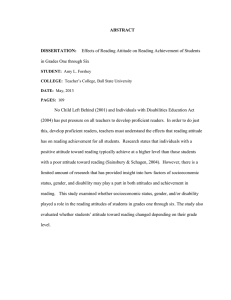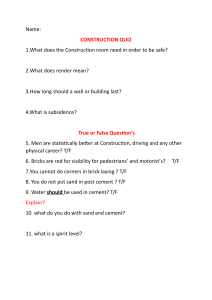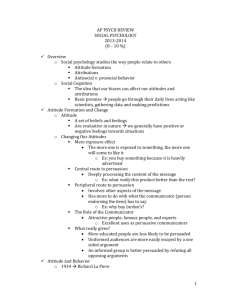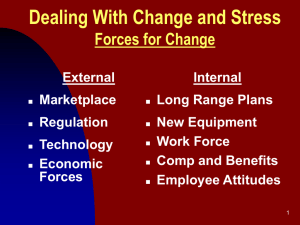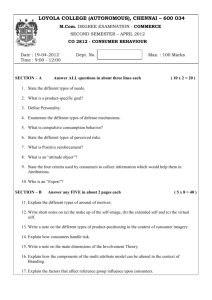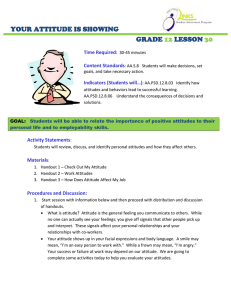KEY TERMS – CHAPTER 14
advertisement
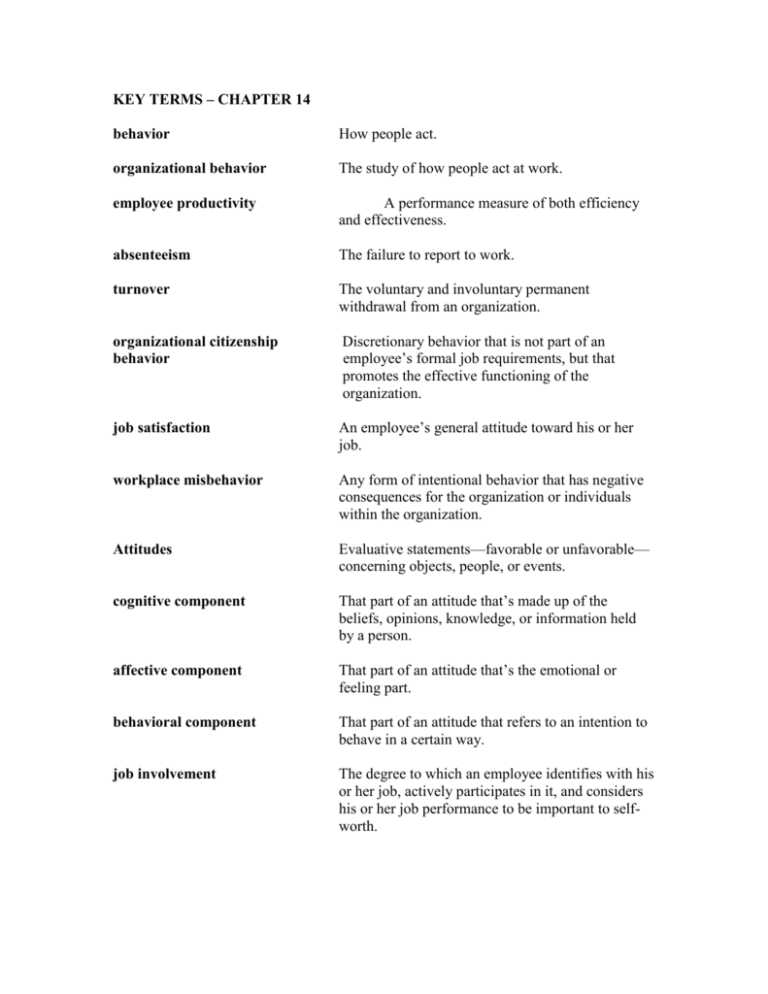
KEY TERMS – CHAPTER 14 behavior How people act. organizational behavior The study of how people act at work. employee productivity A performance measure of both efficiency and effectiveness. absenteeism The failure to report to work. turnover The voluntary and involuntary permanent withdrawal from an organization. organizational citizenship behavior Discretionary behavior that is not part of an employee’s formal job requirements, but that promotes the effective functioning of the organization. job satisfaction An employee’s general attitude toward his or her job. workplace misbehavior Any form of intentional behavior that has negative consequences for the organization or individuals within the organization. Attitudes Evaluative statements—favorable or unfavorable— concerning objects, people, or events. cognitive component That part of an attitude that’s made up of the beliefs, opinions, knowledge, or information held by a person. affective component That part of an attitude that’s the emotional or feeling part. behavioral component That part of an attitude that refers to an intention to behave in a certain way. job involvement The degree to which an employee identifies with his or her job, actively participates in it, and considers his or her job performance to be important to selfworth. organizational commitment An employee’s orientation toward the organization in terms of his or her loyalty to, identification with, and involvement in the organization. perceived organizational support Employees’ general belief that their organization values their contribution and cares about their wellbeing. cognitive dissonance Any incompatibility or inconsistency between attitudes or between behavior and attitudes. attitude surveys Surveys that ask employees how they feel about their jobs, work groups, supervisors, or the organization. personality The unique combination of emotional, thought, and behavioral patterns that affect how a person reacts and interacts with others. big-five model Five-factor model of personality. locus of control The degree to which people believe they control their own fate. Machiavellianism The degree to which people are pragmatic, maintain emotional distance, and believe that ends justify means. self-esteem An individual’s degree of like or dislike for himself or herself. self-monitoring An individual’s ability to adjust his or her behavior to external situational factors. impression management When individuals attempt to control the impression others form of them. emotions Intense feelings that are directed at someone or something. emotional intelligence (EI) The ability to notice and to manage emotional cues and information. perception The process of organizing and interpreting sensory impressions in order to give meaning to the environment. attribution theory A theory that explains how we judge people differently depending on the meaning we attribute to a given behavior. fundamental attribution error The tendency to underestimate the influence of external factors and overestimate the influence of internal factors when judging other’s behavior. self-serving bias The tendency for individuals to attribute their own successes to internal factors while putting the blame for failures on external factors. assumed similarity The belief that others are like oneself. stereotyping Judging a person on the basis of one’s perception of a group to which he or she belongs. halo effect A general impression of an individual based on a single characteristic. learning Any relatively permanent change in behavior that occurs as a result of experience. operant conditioning A type of learning in which desired voluntary behavior leads to a reward or prevents a punishment. social learning theory A learning theory that says people learn through observation and direct experience. shaping behavior Systematically reinforcing each successive step to move an individual closer to the desired behavior.

